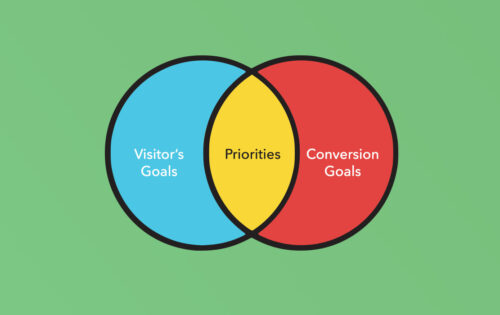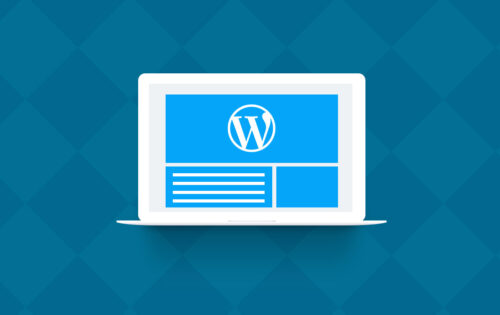
Does your website have an impact on your business? In a word, yes! Developing a well-designed website for a business is imperative since modern technology has ultimately changed the way business is conducted. Consumers have adapted to the digital age, so it’s time for you too. It’s important to know the many advantages of having a website and how it can take your business to the next level.
Having a solid web presence can be a great advertisement for the goods and services your company delivers. The website can also lead to conversions, whether that is a contact form, or ordering goods and services. A successful business website should also establish and proclaim the values and brand your business represents. Having a well thought out, easy to use website is essential for your business and it’s important to plan and create actionable goals for your website.
97 percent of consumers go online to find a local business, so you better have a website for those consumers to visit. Consumers will find you more professional, and it’s been proven that a company can make almost 4 times as much revenue with an online presence. 30 percent of consumers won’t even consider you if you don’t exist online. Since the majority of consumers use websites to locate and engage with a business, you’re losing revenue and customers if you simply can’t be searched. Additionally, a company’s credibility is often based on its web design, with 75 percent of users making snap judgments about a company’s credibility based on this aspect.
Importance of a Well-Designed Website for Your Business
The key to understanding the importance of good design for your business’s website will go a long way to attracting and keeping a loyal clientele. Consider these important factors:
It Sets the First Impression
As any salesperson will no doubt be familiar with, the importance of an excellent first impression is pivotal when making that initial potential customer contact – and a website’s design plays a crucial role in this. If potential clients and customers feel safe, well taken care of, and confident in their purchases – right off the bat – they’ll undoubtedly keep coming back for more.
It Builds Trust with Your Audience
After establishing a good initial impression, the next step is developing a report with your clients or customers. Over time this becomes a relationship of trust, which is key when growing a business. Developing a well-made, well-thought out website will go a long way in beginning to establish such a trusting working relationship moving forward.
A website’s design should reflect the brand personality to build trust with the audience.
Just because your industry isn’t online doesn’t mean you don’t need a website. Your website is used to let a consumer know what type of business you are, what you offer, where you’re located, and why you’re better than the competition. It also provides them with more ways to contact you, because we’re way passed using the yellow pages.

Competitive Search Engine Optimization
Having a well-made website is a great start, but it is imperative to consider how people are going to find your business online. Will people be searching for certain services in your area? Or will you clients come from referrals? It is likely that you want to generate new business by being found in popular search engines such as Google or Bing. The best way to attract new customers to your website is to invest in solid and sustainable SEO practices. This way, potential customers – when searching on Google for the exact goods and services you provide – will be able to find you. This is where the investment in your business’s well-designed website will start to pay off, as a well-made website is crucial for effective search engine optimization.
Proper web design practices are integral to an effective SEO strategy. Collaborating with a web design agency that incorporates SEO services ensures these practices are correctly implemented, ultimately boosting your website’s visibility and performance in search engine results.
Boosts Trust and Brand Consistency
Trust can take many forms – and for your customers – it is important they can latch on to your business’s brand identity. This identity is developed via consistency. This way, customers will feel safer and know what to expect in their dealings with you and your business.
Web design elements like colors and fonts contribute significantly to maintaining brand consistency, ensuring a seamless and recognizable experience for users.
75 percent of consumers also make their first judgments about a company based on their web design. So not only should you have a website, but it should be visually appealing and easy to navigate. This lets the consumer know that you’re professional, you’re with the times, and they don’t need to have any difficulty obtaining basic information about you. This also means that any questions that the consumer has about your company should be quickly answered on your website.
Improves Website Loading Speed
Developing and maintaining a well-designed website means having a website that not only looks good, it has to perform well. UX Design, website flow and content are all critical parts of a website. However, the coding and development of the website greatly impact the loading speed and efficiency. If you take note of these items as well, you’ll be well on your way to establishing a well-made website.
Improves Leads and Conversions
All these factors will take a potential lead and turn them into a loyal customer. Once potential customers know where to find your website and understand your brand and offerings, your client base will start to grow. It is important to highlight your business’s goods and services, make people feel safe and that your business is legitimate. As you start building a trusting relationship your clients will keep coming back.
Reduces Bounce Rates
If your business’s website is well-designed, it will, inevitably also be welcoming. No more potential customers turned away by unintuitive interfaces. Get ready to invite them in – and watch them stay a while! Responsive web design is crucial in reducing bounce rates by ensuring your website functions effectively across various devices, enhancing user experience and retaining visitors. Certain website patterns such as information overload or poor design choices can scare potential customers away. Making things easy to use is critical if you want to keep people on your website and turn them into customers.
Sales Growth
All of these factors will lead to an increase in sales growth for your company and its goods and services. Once customers know where to find you – and intuitively pick up your website’s interface – they will be much more likely to buy products and tell friends and co-workers about their great experience with your business.

Important Elements of Well-Designed Websites
In order to ensure you and your business are developing a website that will, indeed, turn out to be well designed – it is imperative you consider all the factors below – integrating principles of good design as you continue to develop, maintain, and refine your website.
Style Guide
You must ensure you nail down your brand’s style guide early on. This way, brand consistency will flourish and trusting relationships with your customers will continue to be fostered.
Solid Navigation
Ensure your business’s website has excellent flow – so as not to cause any headaches! Remember, you want to invite the customer in, not encourage them to hit the back button and visit your competitors instead.
Responsive Design
Your website needs to work on any device a potential customer might be using to browse it. Phones, tablets, desktops – each customer has their preference and must be catered to. Therefore, ensure your website’s design looks and feels excellent, regardless of viewing device.
Layout
Is your business’s website’s layout serving that solid navigational experience you are aiming for the customer to have? Pages should flow logically from one to the other. Ensure they do!
Brand Image
Stemming from the solid foundation of a style guide, your business’s website should exude the brand image you wish to convey. This will establish expectations and trusting working relationships with customers in the long run.
Purposeful Visuals
Are your website’s visuals in line with your business’s style guide and brand image? Do they adhere to principles of solid navigation, layout, and responsive design? If not, get rid of them. Find visuals which will help and add context to your messaging.
Color
The same considerations should be considered with color choice as well. Keep in mind, color can be a very powerful persuader and dissuader. Make sure that actionable elements (buttons, links etc) stand out from the rest of our content. Other elements might need to be more neutral to fit into the flow of information.
Call-to-Action (CTA)
Ensure there are multiple, clear call-to-actions throughout your website. Otherwise, how else will people learn how to become loyal customers? Help to guide them seamlessly through their customer journeys.
Good Copy
It is essential to tell a firm, clear story with your website’s copy. Why should potential customers care? Who are you? What is your business all about? Make sure you are leaving a lasting impression!

The Impact of Poor Web Design
Poor web design can have a significant impact on a website’s performance and user experience. Imagine landing on a website that is cluttered, difficult to navigate, and visually unappealing. Chances are, you would leave almost immediately. This is known as a high bounce rate, and it’s a common consequence of poor web design. When users find a website unappealing or hard to use, they are unlikely to stick around, leading to low engagement and missed opportunities for conversions.
Moreover, a poorly designed website can severely damage a company’s credibility. In today’s digital age, your website often serves as the first point of contact between your business and potential customers. If your website looks unprofessional or outdated, users may perceive your company as untrustworthy or not credible. This negative impression can be hard to overcome, even if your products or services are top-notch.
Search engines also take note of web design quality. Websites that are poorly designed often suffer from low search engine rankings. Search engines like Google prioritize user experience, and a website that is difficult to navigate or slow to load is unlikely to rank well. This means fewer visitors and less organic traffic, further impacting your business’s online presence.
In summary, poor web design can lead to a high bounce rate, low engagement, a negative impact on credibility, and low search engine rankings. Investing in quality web design is crucial to avoid these pitfalls and ensure your website performs well.
Important Elements of Well-Designed Websites
In order to ensure you and your business are developing a website that will, indeed, turn out to be well designed – it is imperative you consider all the factors below – integrating principles of good design as you continue to develop, maintain, and refine your website.
Style Guide
You must ensure you nail down your brand’s style guide early on. This way, brand consistency will flourish and trusting relationships with your customers will continue to be fostered.
Solid Navigation
Ensure your business’s website has excellent flow – so as not to cause any headaches! Remember, you want to invite the customer in, not encourage them to hit the back button and visit your competitors instead.
Responsive Web Design
Your website needs to work on any device a potential customer might be using to browse it. Phones, tablets, desktops – each customer has their preference and must be catered to. Therefore, ensure your website’s design looks and feels excellent, regardless of viewing device. Responsive design helps website visitors have a seamless experience across different devices, enhancing their ability to easily access and navigate the site.
Layout
Is your business’s website’s layout serving that solid navigational experience you are aiming for the customer to have? Pages should flow logically from one to the other. Ensure they do!
Brand Image
Stemming from the solid foundation of a style guide, your business’s website should exude the brand image you wish to convey. This will establish expectations and trusting working relationships with customers in the long run.
Purposeful Visuals
Are your website’s visuals in line with your business’s style guide and brand image? Do they adhere to principles of solid navigation, layout, and responsive design? If not, get rid of them. Find visuals which will help and add context to your messaging. Choosing a web design agency that understands your brand’s visual needs is crucial to ensure your website effectively communicates your business goals.
Color
The same considerations should be considered with color choice as well. Keep in mind, color can be a very powerful persuader and dissuader. Make sure that actionable elements (buttons, links etc) stand out from the rest of our content. Other elements might need to be more neutral to fit into the flow of information.
Call-to-Action (CTA)
Ensure there are multiple, clear call-to-actions throughout your website. Otherwise, how else will people learn how to become loyal customers? Help to guide them seamlessly through their customer journeys.
Good Copy
It is essential to tell a firm, clear story with your website’s copy. Why should potential customers care? Who are you? What is your business all about? Make sure you are leaving a lasting impression!
The Web Design Process
Creating a well-designed website involves a series of steps, each crucial to the final product. The web design process is a collaborative effort that requires careful planning and execution. Here’s a breakdown of the key stages:
- Planning: The first step in the web design process is planning. This involves defining the website’s purpose, target audience, and goals. Understanding what you want to achieve with your website and who your audience is will guide the entire design process.
- Design: Next comes the design phase. This is where the visual representation of the website is created, including the layout, color scheme, and visual elements. During this stage, web designers work to ensure that the website is not only aesthetically pleasing but also user-friendly.
- Development: Once the design is finalized, the development stage begins. This involves building the website using HTML, CSS, and JavaScript. Web developers bring the design to life, ensuring that all elements function correctly and the website is responsive across different devices.
- Testing: Before launching, the website undergoes thorough testing. This includes checking for usability, accessibility, and functionality. Any issues are identified and resolved to ensure a smooth user experience.
- Launch: The final stage is the launch. The website is made live and available to the public. However, the process doesn’t end here. Continuous monitoring and updates are necessary to keep the website performing well and meeting user needs.
By following these steps, you can create a well-designed website that effectively serves your business goals and provides a positive user experience.
User Experience and Engagement
User experience (UX) and engagement are critical components of a well-designed website. A website that is easy to navigate, visually appealing, and quick to load will keep users engaged and encourage them to explore further. Here are some ways to enhance user experience and engagement:
- Simple Navigation: A simple and intuitive navigation menu helps users find what they’re looking for quickly and easily. Clear navigation reduces frustration and keeps users on your site longer.
- Clear Typography: Using clear and readable typography ensures that users can easily read and understand the content on your website. Avoid overly decorative fonts and ensure there is enough contrast between text and background.
- Visual Elements: Incorporating visual elements such as images, videos, and graphics can make your website more engaging. These elements help break up text and provide a more dynamic user experience. However, ensure that visuals are relevant and add value to the content.
- Responsive Design: A responsive design ensures that your website looks and functions well on all devices, including desktops, laptops, tablets, and smartphones. With more users accessing websites on mobile devices, responsive design is essential for a positive user experience.
- Fast Loading Speed: A fast loading speed is crucial for keeping users engaged. Websites that load quickly are more likely to retain visitors and reduce bounce rates. Optimize images, use efficient coding practices, and leverage caching to improve loading times.
By focusing on these aspects, you can create a well-designed website that provides an excellent user experience and keeps visitors engaged. A positive user experience not only helps retain visitors but also encourages them to return, ultimately benefiting your business.
Want to improve your business website design?
Why not get in touch with DesignUps today? We can help you ensure your business’s website is top notch. Watch your sales growth skyrocket! Reach out to us and start the conversation. We offer free estimates and there is no commitment after our initial consultation.
Frequently asked questions
Consider the frequently asked questions below.
Is Your Website Design Making the Right Impact?
This is really the question you should be asking yourself. Of course, you want to ensure visitors to your website are becoming converted to customers during their interactions with your company. But are they? If you’re unsure of the answer – that’s a good sign you need to contact DesignUps as soon as possible!


